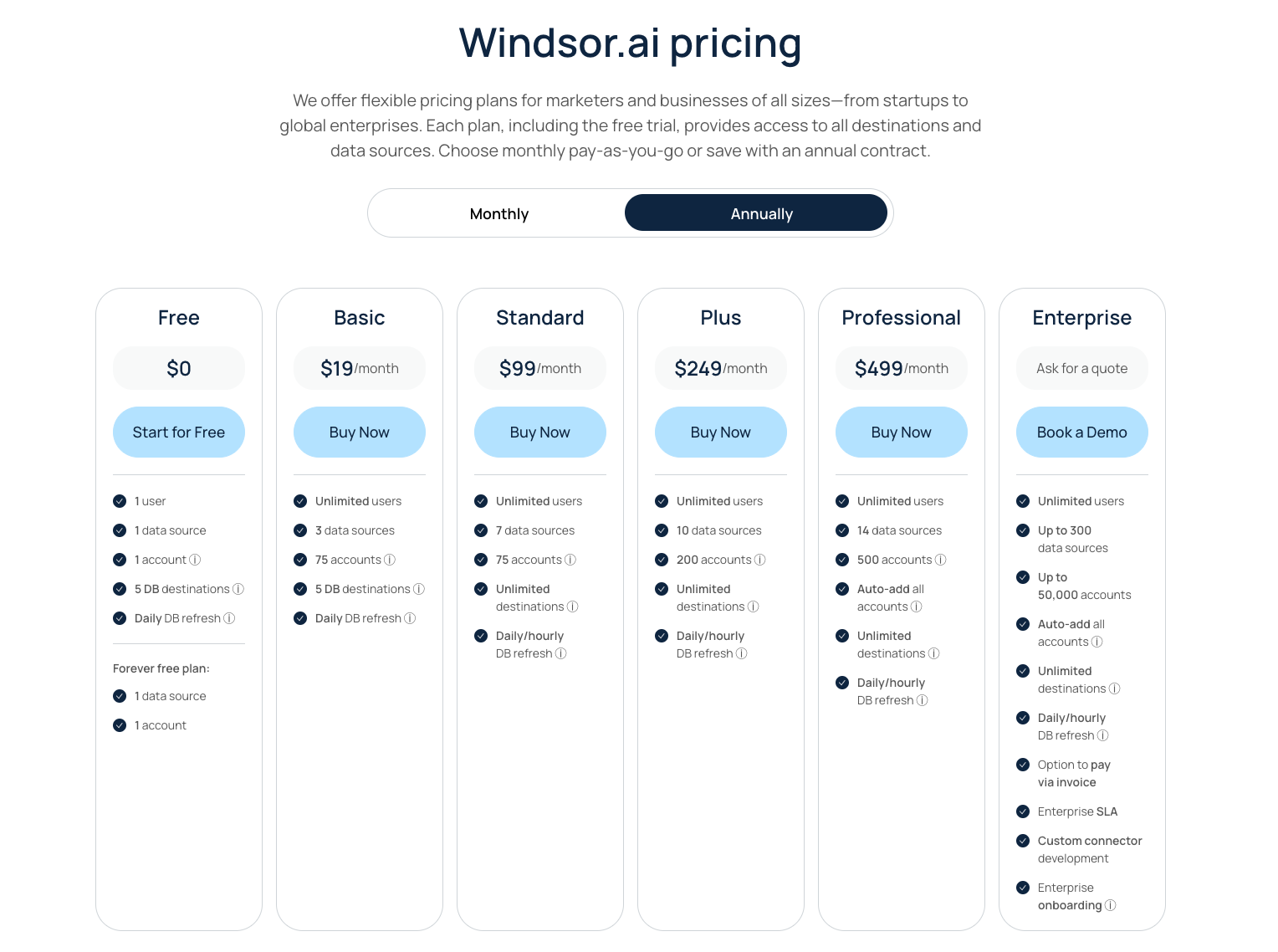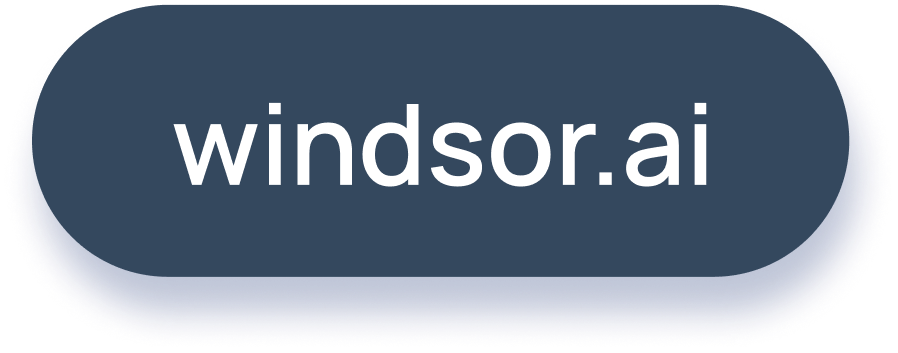Top Fivetran Alternatives & Competitors In 2025
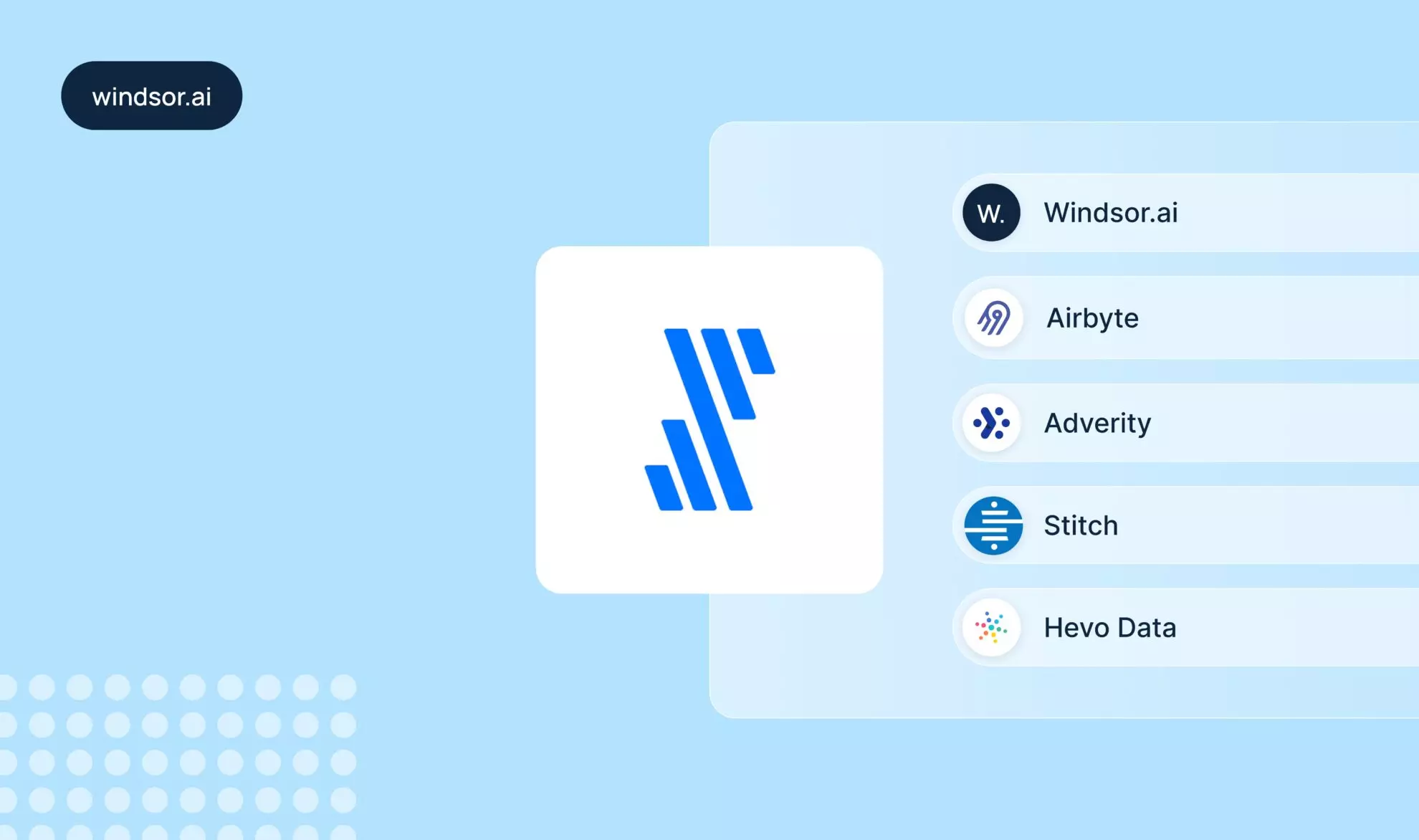
Looking for a Fivetran alternative with powerful features at a better price? This guide highlights the top data integration platforms for 2025, offering improved pricing models, enhanced customization, and scalable solutions for businesses of all sizes.
With these tools, you won’t have to struggle with complex database management like you do with Fivetran—or break the bank to afford it, especially after their latest pricing update. So keep reading to find the best Fivetran alternative that perfectly matches your needs and budget.
Table of content
- What is Fivetran good at?
- Why do businesses look for Fivetran alternatives?
- Best Fivetran Alternative: Windsor.ai
- Adverity
- Airbyte
- Stitch
- Hevo Data
- Rivery
- CData
- Matillion
- Datorama
- Integrate.io (formerly Xplenty)
- Informatica Power Center
- Other popular Fivetran competitors
- Fivetran Alternatives: The Bottom Line
What is Fivetran good at?
First, let’s explore why users choose Fivetran despite it being one of the most expensive and complex data movement platforms on the market.

Fivetran is a cloud-based data integration platform designed to facilitate data consolidation between various sources within one centralized data warehouse.
As an ELT (Extract-Load-Transform) solution, Fivetran automates data pipeline workflows, allowing organizations to seamlessly connect and extract data from various sources, transform it as needed, and load it into their preferred data destination—all without manual intervention.
Fivetran is compatible with various data warehouses such as Amazon Redshift, Google BigQuery, Microsoft Azure, and others, enabling users to store, manage, and analyze their data in a unified and structured environment.
However, like any enterprise-level SaaS, Fivetran comes with its own set of drawbacks alongside its benefits.
Key features of Fivetran:
- Data source connectivity: Fivetran enables quick data extraction from databases, SaaS applications, marketing platforms, and analytics systems through its extensive no-code connectors.
- Automated data syncing: Fivetran automates the data syncing process, ensuring that data is extracted from source systems and loaded into the data warehouse at regular intervals. This automated data-updating feature gives companies access to near real-time data updates or scheduled data refreshes for effective analytics and reporting.
- Scalability and performance: Businesses of all sizes can rely on Fivetran, thanks to its capacity to process massive datasets without compromising performance or speed.
- Monitoring and alerting: The system provides pipeline health monitoring and generates alerts to notify operational teams about any issues or disruptions in the data syncing process, allowing teams to quickly identify and address potential problems.
- Prebuilt data models: Fivetran offers over 50 prebuilt data models tailored for specific analytical use cases in areas such as digital marketing, finance, sales, and more. They enhance analysis and reporting while reducing the time and effort required to derive insights from the integrated data.
It’s important to consider your specific data integration and analytics requirements when evaluating Fivetran’s suitability for your organization. Assess factors such as the types and number of data sources you need to integrate, the frequency of data updates, the scalability of your data volumes, and the analytical scenarios you want to support.
This information will help you answer whether Fivetran aligns with your needs and can effectively facilitate your data integration and analytics workflows.
Fivetran rating (2025 update)
⭐ G2: 4.2/5
⭐ Capterra: 4.7/5
⭐ TrustRadius: 8.3/10
Verdict:
Fivetran is one of the leading data integration tools, but like any product, it may not meet all business needs. Many users find its updated pricing, which starts at $500/month now, too costly.
In addition, the lack of data transformation customization options serves as another critical reason why some users choose to explore Fivetran alternative solutions that offer greater flexibility, affordability, and control.
Why do businesses look for Fivetran alternatives?
Companies may look for alternatives to Fivetran, a data integration platform, for various reasons. Here are a few common motivations:
In 2025, businesses are increasingly switching to Fivetran competitors due to these key reasons:
1. High pricing
Fivetran’s updated consumption-based pricing model (March 2025) poses a major challenge for small and medium-sized businesses due to high costs. The Standard Plan now starts at $500 per month, making it too expensive for companies with growing data needs.
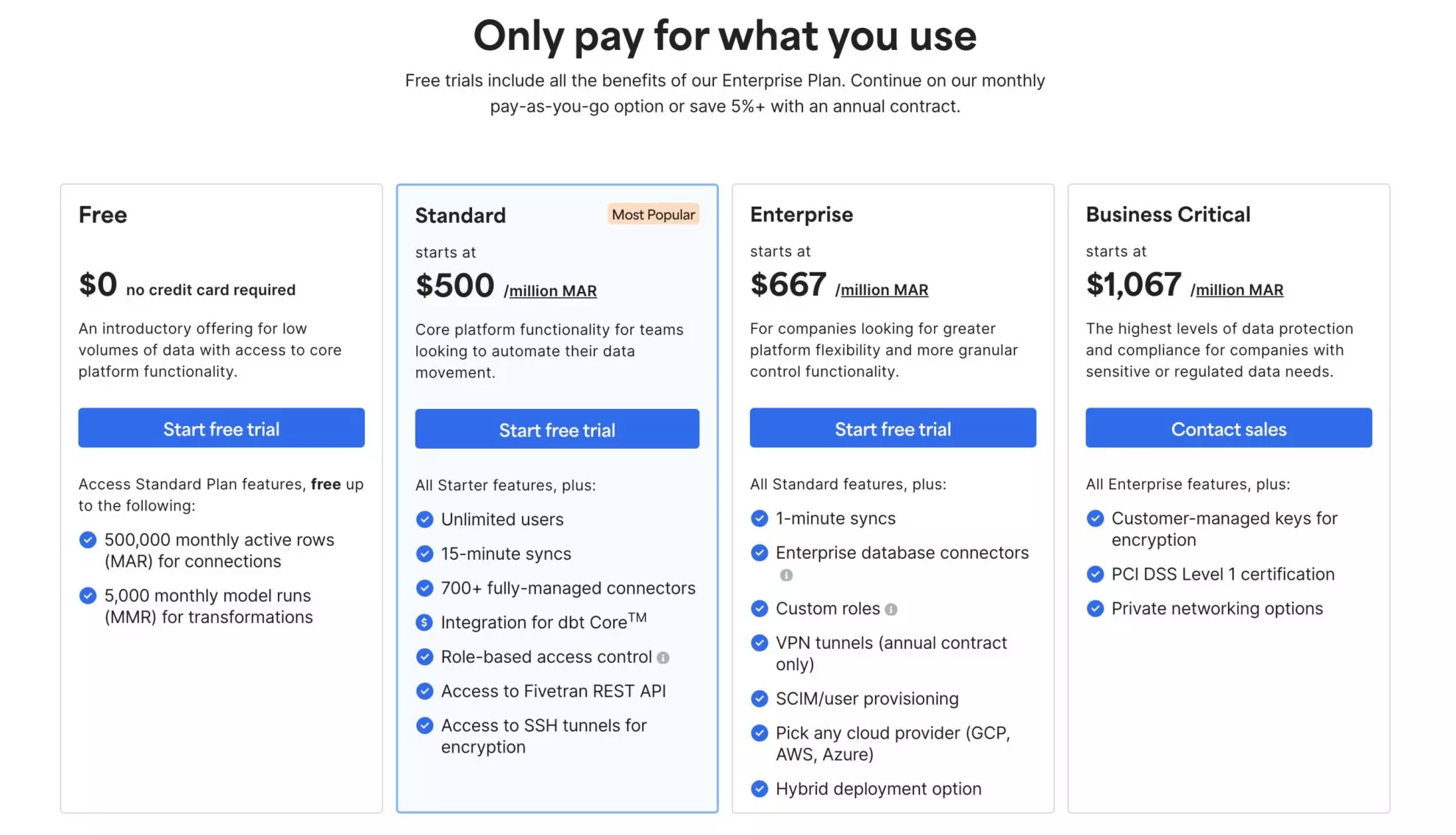
Large organizations may also find Fivetran unaffordable since additional data volume leads to increased charges. As a result, businesses operating within tighter budgets seek more affordable alternatives that replicate Fivetran’s capabilities without the hefty price tag.
2. Limited customization
The predesigned data transformations of Fivetran enable simple integration but fail to accommodate business requirements that entail complex extract-transform-load/load procedures.
Organizations with complex workflows, advanced data transformation needs, and extensive data processing requirements may find Fivetran too limiting. Thus, they choose Fivetran competitors that offer more advanced customization capabilities.
3. Scalability challenges
Companies with large or complex datasets often experience performance and scalability challenges with Fivetran.
Businesses that require rapid synchronization, event-triggered processing, or higher data-handling efficiency are recommended to consider Fivetran competitors.
Many Fivetran alternatives are designed to handle larger data volumes and provide faster sync times and more efficient data processing capabilities.
4. Lack of features
Fivetran presents challenges for businesses that require an all-in-one analytics platform rather than just ETL/ELT functionality. Leading Fivetran alternatives, such as Windsor.ai, provide built-in data visualization tools, AI-driven analytics, and enhanced automation features, making data management more comprehensive and actionable.
5. Insufficient support & documentation
Customer feedback indicates that Fivetran users often experience prolonged delays in technical support, especially in urgent situations. Additionally, many users struggle with insufficient documentation for complex use cases.
Businesses that require immediate assistance and comprehensive documentation may find it reasonable to switch to alternative platforms that offer more responsive customer service and clearer guidance.
Top 11 Fivetran alternatives and competitors
#1 Best Fivetran alternative: Windsor.ai
It’s worth mentioning that I work at Windsor, so I might be a bit biased. But, putting a hand on my heart—if enterprise-level features like ultra-tight security aren’t your top priority, Windsor.ai offers far more flexibility at 26x lower costs, starting at just $19/month, compared to Fivetran.
What’s more, unlike Fivetran, which focuses solely on data movement, Windsor.ai combines ELT functionality with marketing attribution, giving you even deeper insights with no code.
If you’re a marketer like me, you’ve probably been guilty of attributing all the value to the last click, overlooking other crucial steps in the customer journey. That’s why you’ll appreciate Windsor.ai—it seamlessly connects with 325+ data sources and sends data to the most popular BI tools, spreadsheets, databases, and data warehouses in under 2 minutes, providing a more accurate and insightful view of your marketing performance.
Key features of Windsor.ai:
- Windsor.ai delivers ETL functionality with the attribution features on top to generate enhanced insight into business customer engagement. Windsor.ai also enables users to monitor marketing performance improvements and perform accurate conversion credit assignments to help them develop improved advertising methods.
- Windsor.ai provides a more flexible and affordable pricing model, making it a great choice for businesses of all sizes. With pricing plans starting at $19 per month, we offer a cost-effective solution for data integration. In contrast, Fivetran can become costly as data volumes increase.
- Through AI analytics, Windsor.ai supplies businesses with immediate performance monitoring for marketing, which enables them to make data-driven choices leading to better ROI results. Internal first-party and external third-party information come together on Windsor.ai to generate useful knowledge for marketing department staff.
- Windsor.ai offers customizable pipeline systems to users. Fivetran does not provide adaptable solutions due to its strict prebuilt transformation policies. So, due to its flexible design, Windsor.ai accommodates businesses that prioritize autonomy throughout their data integration operations.
Windsor.ai pricing
Windsor currently has one of the most affordable pricing offerings on the market, with prices ranging from $19 to $499 with custom options and add-ons.
Free Trial: Take advantage of thirty days of free access to Windsor.ai service before choosing any plan.
Windsor.ai vs. Fivetran
Despite being a bit ironic about the pricing policies and usability of Fivetran, I must say it can be a great solution for your business. If you need extra security, have enough technical resources to adjust it, and aren’t constrained by budget, then Fivetran could be a great fit.
If you’re looking for powerful ELT functionality combined with advanced marketing attribution to better understand your campaign results and maximize ROI—without overspending on software—Windsor.ai is the perfect alternative.
All in all, Windsor.ai delivers the best combination of affordable pricing options along with comprehensive ELT analytical power and exceptional customization features, making it an ideal Fivetran alternative.
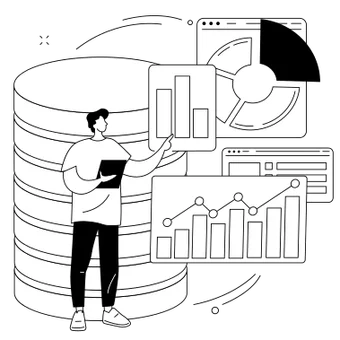
Try Windsor.ai today
Access all your data from your favorite sources in one place.
Get started for free with a 30 - day trial.
#2 Fivetran alternative: Adverity
Adverity supports both business intelligence and marketing teams by integrating data from multiple sources. SImilar to Fivetran, this solution consolidates operational data, advertising platforms, CRM software, social media, and analytics tools into a single, unified view. By centralizing marketing streams, Adverity enhances data accuracy and enables more efficient decision-making.
Key features of Adverity:
- Data transformation: The data transformation capabilities at Adverity include a visual interface. They surpass Fivetran with its fewer automated transformation functions.
- Data visualization & reporting: The user interface of Adverity includes default reporting applications and data visualization functionalities, while Fivetran does not have these functions.
- Data blending: Adverity enables users to merge data between different source types into one complete view, while Fivetran concentrates on warehouse database data synchronization.
Pricing
The company establishes custom pricing models according to the number, types of data sources, and usage volumes, starting at $500/month.
Adverity vs. Fivetran
Choose Adverity if you require data visualization capabilities, transformation capabilities, and data blending abilities.
On the other hand, if you prioritize automation, near real-time data syncing, and scalability, Fivetran may be a better fit.
#3 Fivetran alternative: Airbyte
For businesses that need absolute command over data pipeline operations, the Airbyte open-source ETL/ELT platform is a good choice.
Airbyte brings value to organizations that possess technical personnel while wanting to deploy their solution for unrestricted customization.
Key features of Airbyte:
- 100% open-source: Airbyte operates completely as open-source material, allowing users total access to their data security protocols and compliance needs, along with free utilization without any vendor restrictions.
- 550+ prebuilt connectors and custom connectors: Developers can use prebuilt connectors or utilize the embedded development tools to produce and handle specialized connectors that work with distinctive data sources.
- Ease of use: Airbyte emphasizes simplicity with a user-friendly web-based interface. The platform offers a visual drag-and-drop interface for building data pipelines, making it accessible to users with various technical backgrounds.
Pricing
Pricing starts at no cost for self-hosted users, while managed service solutions are available with custom pricing.
Airbyte vs. Fivetran
- Airbyte functions as an open-source project with self-hosted infrastructure, but Fivetran delivers its service as a completely managed solution.
- Airbyte provides builders with the ability to create custom connectors through its extensive customization features, while Fivetran requires prebuilt operator connectors.
- Fivetran provides an automated service with limited flexibility, whereas Airbyte utilizes a drag-and-drop user interface.
So, consider choosing Airbyte if you need an open-source solution that enables extensive customization and the possibility to create your own connectors in a simple way.
Fivetran might be a better choice if you need a service with complete management without maintenance responsibilities.
#4 Fivetran alternative: Stitch
Stitch provides a budget-friendly data extraction and loading solution that operates through a user-friendly interface that serves businesses of all sizes, from small to medium enterprises.
Key features of Stitch:
- Easy setup: Similar to Windsor.ai, Stitch enables operational simplicity through a convenient interface that allows businesses to set up and configure data pipelines with no code.
- Supports over 100 pre-built connectors: It integrates with popular databases, SaaS applications, and cloud storage providers.
- Build custom connectors: Stitch allows users to extend its capabilities through custom integration using Singer, an open-source framework for building data connectors. This flexibility enables users to connect to custom or less common data sources by developing their own connectors.
- Fixed pricing: The system provides a transparent cost structure that starts at $100/month to offer budget-friendly data processing solutions. This can be advantageous for businesses that want to have more control over their costs and pay based on their specific data integration needs.
Pricing
Stitch is available starting from $100/month and offers a free trial.
Stitch vs. Fivetran
- Stitch offers a simpler setup process with its intuitive user interface, while Fivetran, though fully automated, requires some technical expertise to navigate effectively.
- Customization functionality in Stitch derives from Singer (open-source framework), but Fivetran provides only fixed connectors without customization options.
- Customer costs for Stitch remain transparent through the volume-priced model, while Fivetran pricing becomes expensive throughout data growth.
So, consider choosing Stitch if you seek a less expensive and simple data integration solution.
Still, Fivetran will be a better solution if your project requires automated real-time data synchronization.
#5 Fivetran alternative: Hevo Data
Hevo Data serves businesses that need live data unification within financial institutions and e-commerce entities, as well as IoT platforms. It allows businesses to bring in data through rapid updates, which creates instantaneous data synchronization and preserves up-to-the-minute information for analytical operations and decision-making processes.
Key features of Hevo Data:
- Streaming data integration: Hevo Data offers streaming data integration by delivering real-time data ingestion, which is essential for businesses that require fast updates.
- Code-free data transformations: Users can develop intricate transformations and data mapping without the necessary SQL or programming experience.
- Event-based architecture: Hevo Data is built on an event-based architecture, providing efficient data capacity handling while being able to process massive amounts of data to support growing businesses.
- 100+ prebuilt connectors: This solution includes prebuilt components to integrate users with a wide range of database management systems, cloud-based services, and third-party software applications.
Pricing
Companies can begin with Hevo Data with a plan starting at $239/month, while custom plans are available to accommodate specific data volume and integration needs.
Hevo Data vs. Fivetran
- Hevo Data provides a system for real-time streaming, but Fivetran concentrates on batch data patterns for synchronization.
- The data transformation process with Hevo includes drag-and-drop capabilities, whereas Fivetran demands the use of independent tools.
- The event-based architecture of Hevo allows it to process scalable events, while Fivetran lacks this capability.
Thus, Hevo Data should be your choice if you require simultaneous data integration together with event-triggered architecture.
Fivetran functions best if your primary need includes batch data processing along with automated data syncing capabilities.
#6 Fivetran alternative: Rivery
Rivery, an ELT platform, offers a fully managed, no-code environment for data transformation, processing, and sequencing. Businesses needing fast data pipelines can leverage Rivery without dealing with complex infrastructure maintenance.
Key features of Rivery:
- Data transformation and orchestration: Rivery offers robust data transformation and orchestration capabilities for users to perform complex data transformations, mappings, and aggregations within the platform. It runs automated ELT pipelines to perform data ingestion alongside transformation and storage functions while cutting down personnel workloads.
- Workflow automation: It enables automated workflow management through scheduled and event-triggered data ingestion, which allows businesses to schedule data operations smoothly.
- No-code interface: Rivery’s visual interface enables users with limited coding expertise to design and manage data integration workflows effectively.
- Prebuilt and custom data connectors: Rivery connects to hundreds of SaaS applications, databases, and third-party tools.
Pricing
Rivery offers usage-based pricing: $0.40 per credit variable pricing, which lets businesses employ their resources according to their usage needs.
Rivery vs. Fivetran
- Rivery provides advanced capabilities for data orchestration through transformation pipelines, but Fivetran primarily conducts data movement activities without extensive transformations.
- The interface at Rivery features a no-code design, whereas Fivetran requires SQL for advanced transformation tasks.
- Rivery enables data connectivity to data warehouses as well as lakes and analytics tools, whileFivetran primarily works with data warehouses.
It turns out that Rivery is a better choice for organizations requiring no-code ETL together with workflow automation capabilities.
Fivetran’s strength lies in its automated data integration and near real-time data syncing capabilities, which can be advantageous for organizations that prioritize data freshness and efficiency.
#7 Fivetran alternative: CData
CData offers data connectivity solutions that allow businesses to connect their databases with cloud applications and APIs through their SQL-based integration method.
This tool serves businesses that want to perform complex data queries and manipulation between various software environments.
Key features of CData:
- Connects to 250+ data sources: CData provides adaptable integrative solutions, supporting databases and SaaS applications in addition to cloud storage systems and APIs.
- SQL-based integrations: This platform allows you to run SQL queries on data of all structures through its SQL-based integration framework, which is beneficial for users familiar with SQL who prefer a query-driven approach.
- Low-code ETL features: The platform provides simple, code-free ETL capabilities that enable staff without technical backgrounds to transform data through brief programming tasks.
- Customization and control: CData emphasizes customization and control over the data integration process. It provides tools and libraries that allow users to build custom connectors and define specific data extraction and transformation logic based on their unique requirements.
Pricing
Data volume measurements, deployment setup, and licensing protocols determine CData’s pricing. Its Starter plan comes at $999.
CData vs. Fivetran
- Data connectivity options vary between platforms—CData offers 250+ data connectors, whereas Fivetran supports twice more connections.
- Users who choose CData benefit from custom SQL query capabilities, while Fivetran provides preselected connectors.
- CData implements direct SQL-based data integration methods that are different from Fivetran, which automatically executes ELT functions.
Users should opt for CData whenever they need SQL-based points of query access in addition to broad support for diverse data source connections.
Organizations that want computerized data synchronization should choose Fivetran.
#8 Fivetran alternative: Matillion
The cloud-native ETL tool Matillion brings sustainable data integration along with transformation capabilities to its users.
Through Matillion, businesses can perform data extraction along with transformation and loading without disruption, which supports all major cloud data warehouses, including Snowflake, BigQuery, and Redshift.
Key features of Matillion:
- Advanced ETL capabilities: The platform provides an extensive set of ETL capabilities with features for performing joins and aggregations.
- Data transformation and orchestration: Matillion focuses on data transformation and orchestration by providing a visual interface for building data pipelines and performing complex data transformations. Matillion allows users to manipulate, enrich, and cleanse data as part of the integration process.
- Code-free system: Matillion offers a code-free UI with a simple drag-and-drop user interface for building data pipelines, making it accessible to users with limited coding expertise.
Pricing
The solution offers custom pricing that depends on usage together with the chosen cloud provider. The Basic Plan costs $1000/month.
Matillion vs. Fivetran
- Matillion offers complete ETL functionality, while Fivetran focuses on performing ELT operations.
- The user interface systems of Matillion and Fivetran differ because Matillion uses drag-and-drop functionality, and Fivetran operates autonomously.
- Matillion implements Extract Transform Load as its data management method, although Fivetran operates with Extract Load Transform.
Choose Matillion when dealing with advanced ETL processes along with data transformation requirements.
Otherwise, opt for Fivetran when you require automatic ELT capabilities alongside basic data alterations.
#9 Fivetran alternative: Datorama
Marketing Cloud Intelligence (formerly Datorama) solution consolidates multi-channel marketing performance metrics for organizational use.
This tool enables agencies, enterprises, and marketing teams to track campaign data with features designed to optimize advertising investments.
Key features of Datorama:
- Advanced AI-driven analytics: Through AI learning, the system detects advertising campaign patterns and generates actionable insights. It leverages machine learning algorithms to provide predictive and prescriptive analytics for marketing optimization.
- Data aggregation and visualization: The platform achieves unified framework integration by merging social media data with CRM system paid advertisement information alongside CRM and email marketing data. Its real-time dashboard capabilities enable users to create reports for monitoring multi-channel marketing effectiveness.
- Scalability: The cloud-based infrastructure of the platform extends its capacity to process big enterprise workloads while preserving usable flexibility in addition to reliability features.
Pricing
Custom pricing for enterprise-level plans. The Starter Plan comes at $3,000/month.
Datorama vs. Fivetran
- Both tools possess different expertise since Datorama focuses on marketing data visualization, while Fivetran delivers general data integration functions.
- Datorama consolidates entire data sets between different platforms, whereas Fivetran focuses primarily on running automatic data syncing operations.
- AI & Machine Learning functions exist only in Datorama because the analytics tools are unavailable in Fivetran.
So, here’s the verdict: choose Datorama if you prioritize marketing data visualization tools alongside AI analysis components.
Opt for Fivetran if your main goal is to connect your data warehouses at a basic level.
It’s worth noting that Marketing Cloud Intelligence and Fivetran can complement each other in a marketing data stack. Fivetran can handle the data integration aspect, moving data into a data warehouse, which can then be leveraged by Marketing Cloud Intelligence for further analytics and visualization.
#10 Fivetran altenrnative: Integrate.io
Users without extensive technical expertise in data pipeline development can significantly benefit from Integrate.io’s low-code ETL platform. It serves as a viable Fivetran competitor, offering prebuilt integrations, real-time data synchronization, and robust security features.
Key features of Integrate.io:
- Code-free ETL: This platform offers easy visual operations for pipeline creation, enabling users with limited coding expertise to build and manage complex data integration workflows. Additionally, it provides a wide range of pre-built data transformation components to simplify the ETL process.
- Flexible pricing: The price structure of Integrate.io adjusts to match usage levels, which makes the platform cost-effective when compared with Fivetran.
- Advanced transformations: The platform permits users to manage ETL procedures by planning and controlling workflows through automated features. It also contains Data Transformation Tools that enable users to operate data structures using built-in SQL functions and modify their structure.
Pricing
Integrate.io begins at $299/month and offers data volume-based pricing options that users can adjust.
Integrate.io vs. Fivetran
- Users of Integrate.io benefit from low-code tools for transformation, while Fivetran requires its customers to execute transformations outside the system.
- Users who rely on Integrate.io get visual tools for ETL operations with no coding required but Fivetran has self-operating synchronization capabilities that remain inaccessible to user modifications.
- Integrate.io delivers more cost-effective price plans than Fivetran which incur rising expenses as data consumption levels grow.
Consider choosing Integrate.io if you prefer a code-free environment for building and managing complex data transformations and orchestration.
Fivetran’s strength lies in its near real-time data syncing capabilities, which can be advantageous for organizations that require up-to-date data for their analytics and reporting.
#11 Fivetran alternative: Informatica Power Center
Informatica Power Center serves as an enterprise data integration solution that provides users with Enterprise-grade Extract Transform Load (ETL) features along with data management and transformation superiorities.
Large organizations find Informatica Power Center suitable for its ability to deliver scalable, secure data management solutions with high performance.
Key features of Informatica Power Center:
- Extensive data governance tools: These provide compliance management, metadata tracking, and data lineage features.
- Advanced transformation capabilities: The platform’s advanced transformation abilities work with challenging ETL procedures while implementing multiple data enrichment steps.
- Scalability: The system handles extensive datasets through its capability to attain massive data integration with ease and reliability.
- Broad connectivity and transformation capabilities: Power Center offers a wide range of connectors to various data sources and targets, allowing users to integrate data from diverse systems. It provides extensive data transformation capabilities, including advanced mapping, data quality, and data governance features.
Pricing
Custom quotes for enterprise deployments.
Informatica Power Center vs. Fivetran
- The data management capabilities at the Enterprise level in Informatica exceed those of Fivetran because Fivetran does not provide comprehensive governance tools.
- Informatica allows extensive customization and data transformation capabilities to perform complex integration scenarios while Fivetran follows standardized operations.
- The setup process for Fivetran proves simpler than Informatica, yet Informatica delivers advanced capabilities.
Use Informatica Power Center if you’re an organization that requires enterprise-level data governance capabilities alongside tailored system customization options.
In turn, you should pick Fivetran if you require automated data integration solutions that can be established quickly.
Other popular Fivetran competitors
- Improvado
- Supermetrics (check Supermetrics vs Fivetran)
- Funnel.io
- Coupler.io
- Rivery
- Segment
- Dataslayer
- PorterMetrics
- Portable
Fivetran Alternatives: The Bottom Line
With this guide, you’re now equipped with the top Fivetran competitors and alternatives tailored to various business needs.
Each platform offers unique features, pricing models, and capabilities—so when choosing the best alternative, consider factors like the required data sources, transformation flexibility, ease of use, scalability, and budget.
While Fivetran remains a solid ELT solution, it may not fit every business requirement. If you’re looking for greater customization, real-time data processing, and cost-effeciency, Windsor.ai could be the winning choice.
✅ 30-day free trial
✅ Affordable pricing
✅ Advanced marketing analytics
Start your 30-day free trial with Windsor.ai today and enjoy a Fivetran-level data integration experience at a fraction of the cost!
Read also:
Fivetran Pricing Model Explained: How Much Does It Cost In 2025?



